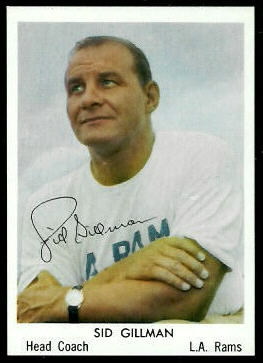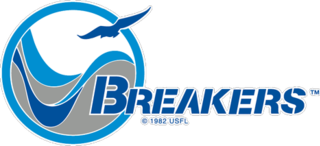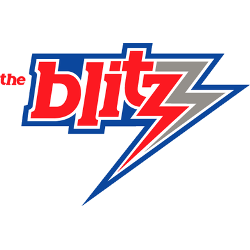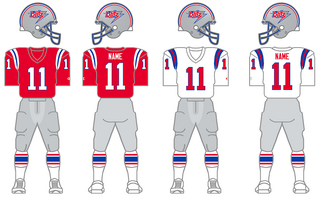
The United States Football League (USFL) was a professional American football league that played for three seasons, 1983 through 1985. The league played a spring/summer schedule in each of its active seasons. The 1986 season was scheduled to be played in the autumn/winter, directly competing against the long-established National Football League (NFL). However, the USFL ceased operations before that season was scheduled to begin.

Sidney Gillman was an American football player, coach and executive. Gillman's insistence on stretching the football field by throwing deep downfield passes, instead of short passes to running backs or wide receivers at the sides of the line of scrimmage, was instrumental in making football into the modern game that it is today. He was inducted as a coach into the Pro Football Hall of Fame in 1983, and the College Football Hall of Fame in 1989.

The Portland Breakers were an American football team that played in the United States Football League (USFL) in the mid-1980s. Before moving to Portland, Oregon, the franchise was previously in Boston, Massachusetts as the Boston Breakers and New Orleans, Louisiana as the New Orleans Breakers.
The Philadelphia / Baltimore Stars were a professional American football team which played in the United States Football League (USFL) in the mid-1980s. Owned by real-estate magnate Myles Tanenbaum, they were the short-lived league's dominant team, playing in all three championship games and winning the latter two. They played their first two seasons in Philadelphia as the Philadelphia Stars before relocating to Baltimore, where they played as the Baltimore Stars for the USFL's final season. Coached by Jim Mora, the Stars won a league-best 41 regular season games and 7 playoff games.
The Orlando Renegades were a professional American football team that played in Orlando, Florida, in the United States Football League (USFL) for a single season in 1985. Before its season in Orlando, the franchise played in Washington, D.C., as the Washington Federals for two seasons, in 1983 and 1984.

The Chicago Blitz was a professional American football team that played in the United States Football League in the mid-1980s. They played at Soldier Field in Chicago, Illinois.
The Arizona Outlaws were a professional American football team that played in the United States Football League in the mid-1980s. They were owned by Fresno banker and real estate magnate William Tatham Sr., who had briefly owned the Portland Thunder of the World Football League.
The Michigan Panthers were a professional American football team based in the Detroit, Michigan area. The Panthers competed in the United States Football League (USFL) as a member of the Western Conference and Central Division. The team played its home games at the Pontiac Silverdome in Pontiac, Michigan.
The Oakland Invaders were a professional American football team that played in the United States Football League (USFL) from 1983 through 1985. Based in Oakland, California, they played at the Oakland–Alameda County Coliseum.

The Tampa Bay Bandits were a professional American football team in the United States Football League (USFL) which was based in Tampa, Florida. The Bandits were a charter member of the USFL and was the only franchise to have the same principal owner, head coach, and home field during the league's three seasons of play (1983–1985). The Bandits were one of the most successful teams in the short-lived spring football league both on the field and at the ticket booth. Spurrier's "Bandit Ball" offense led them to three winning seasons and two playoff appearances, and their exciting brand of play combined with innovative local marketing helped the Bandits lead the league in attendance. However, the franchise folded along with the rest of the USFL when the league suspended play after the 1985 season.
The Los Angeles Express was a team in the United States Football League (USFL) based in Los Angeles, California. Playing at the Los Angeles Memorial Coliseum, the Express competed in all three of the USFL seasons played between 1983 and 1985.
The Denver Gold was a franchise in the United States Football League, an attempt to establish a second major professional football league in the United States, playing a springtime season, from 1983 to 1985. The Gold played their home games at Mile High Stadium in Denver, Colorado; and were co-tenants in the spring with the Triple-A Denver Zephyrs baseball team.

George Herbert Allen was an American football coach. He served as the head coach for two teams in the National Football League (NFL), the Los Angeles Rams from 1966 to 1970 and the Washington Redskins from 1971 to 1977. Allen led his teams to winning records in all 12 of his seasons as an NFL head coach, compiling an overall regular-season record of 116–47–5. Seven of his teams qualified for the NFL playoffs, including the 1972 Washington Redskins, who reached Super Bowl VII, losing to Don Shula's Miami Dolphins. Allen made a brief return as head coach of the Rams in 1978, but was fired before the regular season commenced.
The Houston Gamblers were an American football team that competed in the United States Football League in 1984 and 1985. The Gamblers were coached by veteran NFL head coach Jack Pardee in both their seasons. They were noteworthy for introducing former Middletown (Ohio) High School football coach Glenn "Tiger" Ellison's Run & Shoot offense to the world of pro football.
On May 24, 1982, the United States Football League (USFL) reached an agreement with ABC and ESPN on television rights. The money for inaugural 1983 season would be a total of $13 million: $9 million from ABC and $4 million from ESPN.
Alan David Risher is a former quarterback for the LSU Tigers and the United States Football League (USFL), where he played for the Arizona Wranglers. The USFL was a 12 team league in 1983, so although Risher was drafted 170th overall in the league's 1983 draft, he was actually the team's 15th round pick that year. Risher was the starting quarterback for the Wranglers for most of the league's initial 1983 season. He is known best for directing what is widely acknowledged as the greatest upset in USFL history. He backed up Greg Landry on the 1984 Western Conference Champion Wranglers squad.

The 1985 USFL season was the third and final season of the United States Football League (USFL), and the last by a league using that name until the 2022 USFL season.

The 1984 USFL season was the second season of the United States Football League.
Jackie Flowers is a former professional American football wide receiver in the United States Football League (USFL) for the Arizona Wranglers, Chicago Blitz, Pittsburgh Maulers and the Orlando Renegades. He also played in the National Football League (NFL) for the Tampa Bay Buccaneers. He played college football at Florida State University.

Allen had been out of coaching since 1977; he had been a candidate for the vacant head coaching position with the Chicago Bears a year earlier; he'd made his mark in the NFL a quarter-century earlier as the Bears' de facto defensive coordinator. However, Bears owner George Halas had never forgiven Allen for defecting to the Los Angeles Rams in 1965. The feeling was mutual; Allen relished the chance to get the better of the rival Bears. Allen immediately became the "face" of the new team, and set about putting together the best 40-man roster he could find. The result was a team loaded with NFL veterans that was the early favorite to be the new league's first champion.






